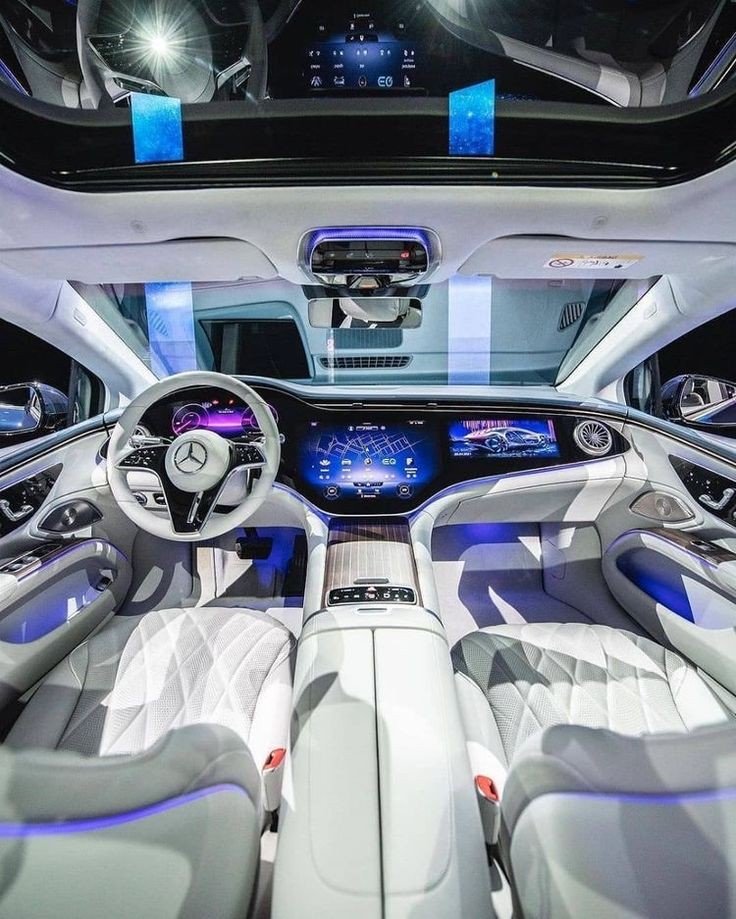
The automotive industry is undergoing a significant transformation driven by advancements in digital technology, changing consumer behaviors, and evolving business models. Traditional automotive dealerships, which have long served as the primary channel for car sales and service, are now facing disruption. With the rise of online car buying, direct-to-consumer (DTC) sales models, and virtual showrooms, dealerships are compelled to rethink their role and adapt to the digital era. This article explores the future of automotive dealerships, the trends shaping their evolution, and the strategies they need to embrace to stay relevant in the digital age.
1. The Shift to Digital Car Buying
The digital era has ushered in a new wave of consumer expectations, with many customers now preferring the convenience and transparency of online car shopping. Recent studies indicate that a growing number of car buyers are completing some or all of their purchase journey online, from researching vehicles to securing financing and arranging home delivery.
Key Drivers of Digital Car Buying:
- Convenience: Consumers increasingly value the ability to browse, compare, and purchase vehicles from the comfort of their homes. Digital platforms offer the flexibility to explore options, configure vehicles, and schedule test drives without visiting a physical dealership.
- Transparency and Information: Online car-buying platforms provide detailed information, including vehicle specifications, pricing, reviews, and comparisons, allowing consumers to make informed decisions. This level of transparency fosters trust and confidence in the buying process.
- Contactless Experience: The COVID-19 pandemic accelerated the shift toward digital car buying by highlighting the importance of contactless transactions. Virtual showrooms, remote consultations, and online financing options have become more popular, reducing the need for in-person visits.
2. The Rise of Direct-to-Consumer (DTC) Sales Models
One of the most significant challenges for traditional dealerships is the emergence of direct-to-consumer (DTC) sales models, where automakers sell directly to customers without intermediaries. Companies like Tesla have pioneered this approach, bypassing traditional dealership networks and establishing their own retail locations and online platforms.
Impact of DTC Models on Dealerships:
- Reduced Intermediary Role: DTC models eliminate the need for traditional dealerships to act as intermediaries between automakers and customers. This can lead to reduced margins for dealerships and a shift in their role from sales-focused to service-oriented.
- Greater Control for Automakers: By selling directly to consumers, automakers gain more control over the customer experience, pricing, and branding. This approach allows them to offer consistent pricing, streamline inventory management, and build stronger customer relationships.
3. The Emergence of Virtual Showrooms and Online Platforms
Virtual showrooms and online platforms are becoming essential tools for automotive dealerships to engage customers in the digital era. These platforms offer an immersive, interactive experience that allows customers to explore vehicles in detail, customize options, and even take virtual test drives.
Features of Virtual Showrooms:
- 3D Vehicle Configurators: Virtual showrooms often include 3D configurators that allow customers to visualize different models, colors, trims, and features. This helps customers personalize their vehicles and see how different options affect the final appearance and cost.
- Virtual Reality (VR) and Augmented Reality (AR) Experiences: Some dealerships are incorporating VR and AR technologies to provide an immersive experience, enabling customers to explore vehicles from different angles, experience the interior layout, and interact with features in a virtual environment.
- Live Video Consultations: Virtual showrooms can also include live video consultations with sales representatives, allowing customers to ask questions, request personalized demonstrations, and receive real-time assistance.
4. Changing Role of Physical Dealerships
While the digital era has transformed car buying, physical dealerships are not becoming obsolete. Instead, their role is evolving to complement the online experience and provide additional value to customers.
New Roles for Physical Dealerships:
- Experience Centers: Physical dealerships can transform into experience centers where customers can explore vehicles in person, test drive new models, and engage with brand ambassadors. These centers focus on delivering a memorable experience rather than solely on sales.
- Service and Maintenance Hubs: Dealerships will continue to play a critical role in providing after-sales services, such as maintenance, repairs, and recalls. As vehicles become more connected and complex, the need for certified technicians and specialized service centers will grow.
- Omni-Channel Integration: Dealerships will need to integrate digital and physical channels to offer a seamless, omni-channel experience. For example, customers may start their car-buying journey online, schedule a test drive at a dealership, and complete the purchase either online or in-store.
5. Leveraging Data and Analytics for Personalized Experiences
Data and analytics are becoming key drivers of success in the automotive industry, allowing dealerships to deliver more personalized and engaging experiences to customers.
Data-Driven Strategies for Dealerships:
- Understanding Customer Preferences: Dealerships can leverage data from online platforms, social media, and customer interactions to gain insights into customer preferences, buying behavior, and market trends. This information can be used to tailor marketing efforts, promotions, and inventory management.
- Enhancing Customer Engagement: By analyzing data on customer interactions, dealerships can identify opportunities for targeted engagement, such as personalized offers, follow-up communications, and loyalty programs. This helps build stronger relationships and enhances customer retention.
- Optimizing Inventory and Operations: Data analytics can help dealerships optimize their inventory by predicting demand, identifying popular models, and managing stock levels more efficiently. This reduces carrying costs and ensures that the right vehicles are available to meet customer demand.
6. Adopting New Business Models and Revenue Streams
To stay competitive in the digital era, automotive dealerships are exploring new business models and revenue streams beyond traditional vehicle sales.
Emerging Business Models:
- Subscription Services: Some dealerships are offering vehicle subscription services that allow customers to pay a monthly fee to access a range of vehicles without the commitment of ownership. This model caters to customers who value flexibility and convenience.
- Mobility Services: Dealerships can expand into mobility services, such as car-sharing, ride-hailing, and rental services. This allows them to tap into new customer segments and generate additional revenue streams.
- Partnerships and Collaborations: Dealerships can partner with technology companies, financial institutions, and mobility providers to offer bundled services, such as financing, insurance, and connectivity solutions, creating a comprehensive customer experience.
7. Enhancing Customer Trust and Transparency
Building trust and transparency is critical for automotive dealerships in the digital era. Consumers expect a seamless, honest, and straightforward buying process, both online and offline.
Strategies for Building Trust:
- Transparent Pricing: Offer clear, transparent pricing information, including all fees, taxes, and discounts. This helps build trust and reduces the likelihood of customers abandoning the purchase due to hidden costs.
- Customer Reviews and Testimonials: Encourage customers to leave reviews and testimonials on digital platforms. Positive reviews can enhance the dealership’s reputation and credibility, attracting more potential buyers.
- Digital Customer Support: Provide responsive, accessible customer support through digital channels, such as live chat, social media, and email. Quick responses to customer inquiries and concerns can improve satisfaction and build trust.
8. Utilizing Advanced Technologies for Efficiency and Innovation
Advanced technologies, such as artificial intelligence (AI), machine learning, and blockchain, offer opportunities for automotive dealerships to innovate and improve operational efficiency.
Technological Innovations for Dealerships:
- AI-Powered Chatbots: AI-powered chatbots can handle routine customer inquiries, provide instant support, and schedule appointments, reducing the workload on staff and improving customer service.
- Virtual Assistants and Voice Search: Virtual assistants and voice search capabilities can help customers find information, compare models, and book test drives more easily, enhancing the digital experience.
- Blockchain for Secure Transactions: Blockchain technology can be used to facilitate secure, transparent transactions, such as vehicle financing, warranty management, and supply chain tracking, reducing fraud and improving trust.
9. Adapting to Electric Vehicles (EVs) and Autonomous Cars
The rise of electric vehicles (EVs) and autonomous cars is reshaping the automotive landscape, creating new opportunities and challenges for dealerships.
Implications of EVs and Autonomous Cars:
- Specialized Sales and Service Expertise: Dealerships need to develop expertise in selling and servicing electric vehicles, including knowledge of battery technology, charging infrastructure, and government incentives. This expertise can position dealerships as trusted advisors in the transition to electric mobility.
- Autonomous Vehicle Showrooms: As autonomous vehicles become more prevalent, dealerships may create dedicated showrooms and experience centers for self-driving cars, allowing customers to learn about the technology and experience it firsthand.
- Infrastructure Investments: Dealerships may need to invest in new infrastructure, such as charging stations for EVs and specialized service bays for autonomous vehicles, to meet changing customer needs.
10. Embracing a Customer-Centric Culture
The future of automotive dealerships lies in adopting a customer-centric culture that prioritizes customer experience, convenience, and satisfaction.
Key Elements of a Customer-Centric Dealership:
- Personalized Experiences: Leverage data and technology to offer personalized experiences at every touchpoint, from online browsing to in-store interactions and after-sales service.
- Seamless Omni-Channel Integration: Ensure that customers can move seamlessly between online and offline channels, accessing the same information, services, and support.
- Continuous Improvement: Continuously gather customer feedback and use it to improve processes, offerings, and the overall experience. Invest in training and development for staff to enhance their skills and customer service capabilities.
Conclusion
The future of automotive dealerships in the digital era will be shaped by their ability to adapt to changing consumer behaviors, leverage digital technologies, and embrace new business models. While traditional sales methods are evolving, dealerships still have a critical role to play in providing value through personalized experiences, expert service, and customer engagement. By embracing digital transformation, focusing on customer-centric strategies, and innovating in response to industry trends, automotive dealerships can remain relevant and thrive in the rapidly changing landscape of the automotive industry.







